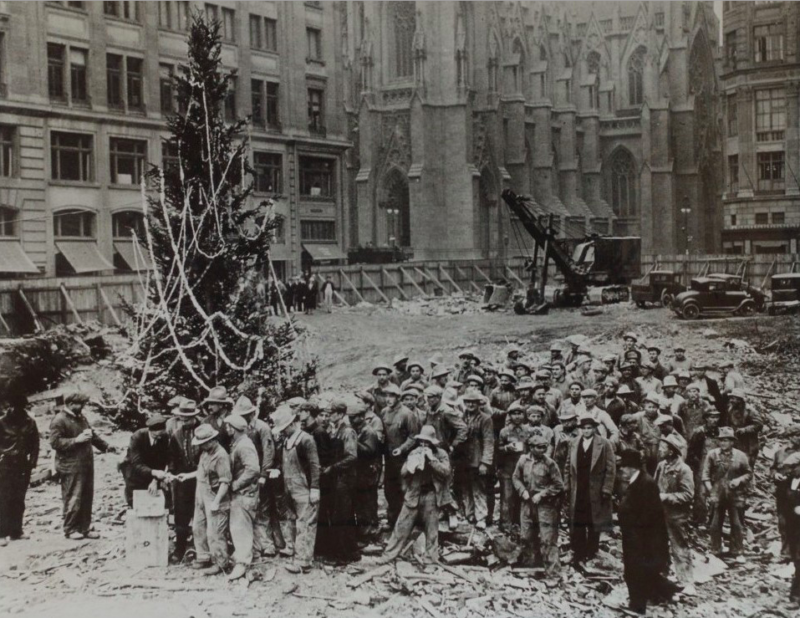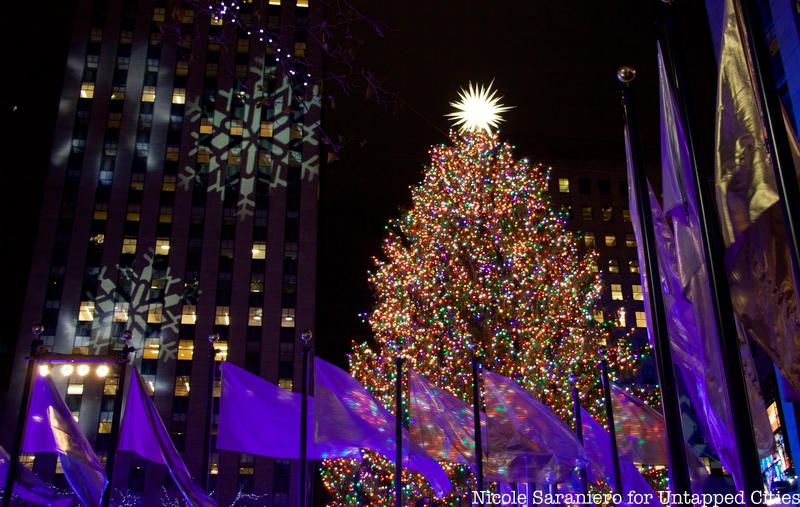NYC's Long-Awaited Davis Center Opens in Central Park
A stunning new facility at Harlem Meer opens to the public this weekend!


On December 24, 1931 the first unofficial Christmas tree at the Rockefeller Center site was put up spontaneously by a group of construction workers. Since 1928 John D. Rockefeller Jr. had been paying Columbia University $5 million a year to lease a 12-acre stretch of land bounded by 5th and 6th Avenues between 49th and 52nd Streets. The history of the land itself is described in the Nomination Form for the National Register of Historic Places:
“Between 1804 and 1811 this property had been developed by Dr. David Hosack as the famed Elgin Gardens. An innovative concept in America, its legacy was to survive in Rockefeller Center’s rooftop and Channel Gardens. In 1811 rising costs led Dr. Hosack to sell the property to New York State. Three years later the nearly 12 acre plot was conveyed to Columbia College (later university) under an aid-to-education act. Located about three miles north of the college campus at Church Street, the “Upper Estate” was leased for residential development, all of which was completed by 1879. By the mid-1920s, however, many of the 298 row houses in this once stylish neighborhood had deteriorated into an unseemly collection of boarding houses, nightclubs and speakeasies on the northern boundary of New York’s theater district.”

Rockefeller planned to turn the area into a cultural center with a new Metropolitan Opera House as its anchor but the 1929 market crash left the opera languishing and he decided to move away from the partnership. By 1930 he invested another $100 million to remove the smaller dilapidated structures on the property and replace them with 14 larger buildings which he envisioned to be a city within a city. It was a risky move that he hoped would make his initial investment finally pay off. Rockefeller promptly renewed the lease for another 23 years and undertook one of the largest private building projects in modern history.

By December 1931, most New Yorkers were suffering from the economic devastation caused by the Great Depression. On December 24 the New York Times reported a surplus of unsold Christmas trees since people weren’t able to afford them: “Christmas trees were a glut on the market yesterday…. More than 120 carloads of trees remain unsold.” In contrast, the Rockefeller Center project employed close to 40,000 people desperate for work. So that Christmas Eve, the construction workers, grateful to have jobs, decided to pool their money and purchase one of those surplus trees.
They took a twenty-foot balsam fir and put it up in the center of the newly cleared work site. The men decorated the tree with various items including tin cans, cranberries, and paper garlands made by some of their families. The tree was not lit, but the foreman placed a small table under it were he handed out the worker’s paychecks before they went home to their families for the holiday.
The first “official” Rockefeller Christmas tree lighting took place in 1933 with a 50 foot balsam fir as a publicity stunt to draw attention to the new RCA Building (30 Rock) which opened the May prior. A publicist from Rockefeller Center said the event would become a tradition calling the tree “a holiday beacon for New Yorkers and visitors alike.”

According to Rockefeller Center’s official website, two trees were lit in 1936 to celebrate the opening of the new ice skating rink on the plaza. During World War II, three smaller trees decorated in red, white, and blue were put up but not lit because of black-out regulations. No materials essential to the war could be used so they were decorated with painted wooden stars and globes.
Since the tree lighting tradition began the tallest tree on record was the 1999 Norway Spruce from Killington, CT coming in at 100 feet. This year’s tree from Oneonta, NY comes in second at 94 feet. It is reported that over 125 million people will visit the Rockefeller Christmas Tree before it is taken down in early January.
Next, read about 10 Secrets About the Rockefeller Christmas Tree
Subscribe to our newsletter